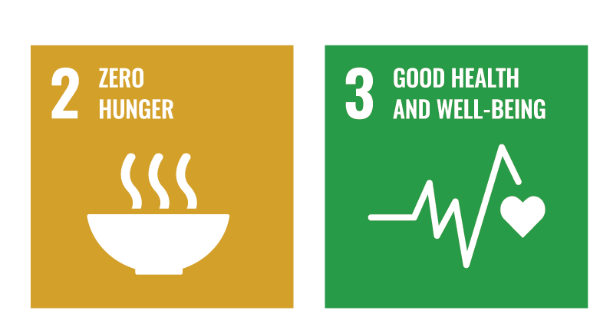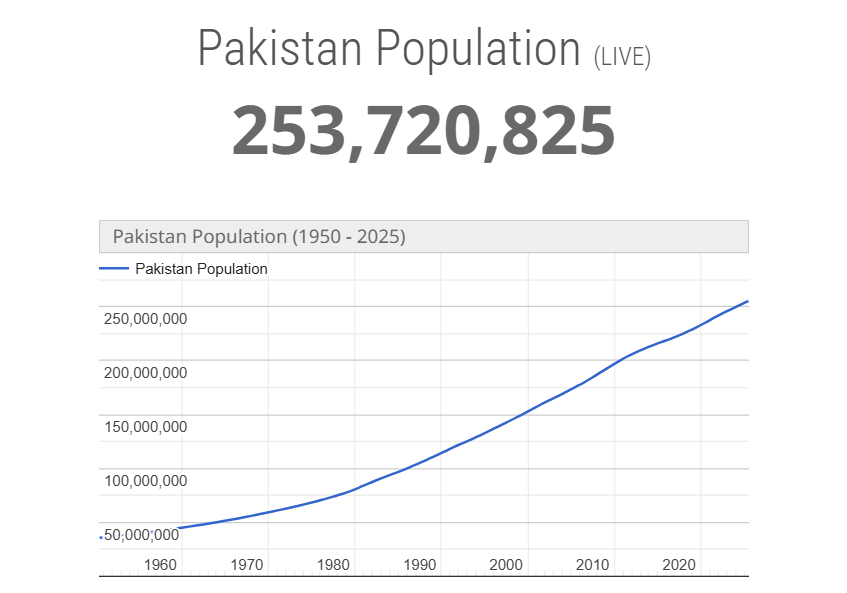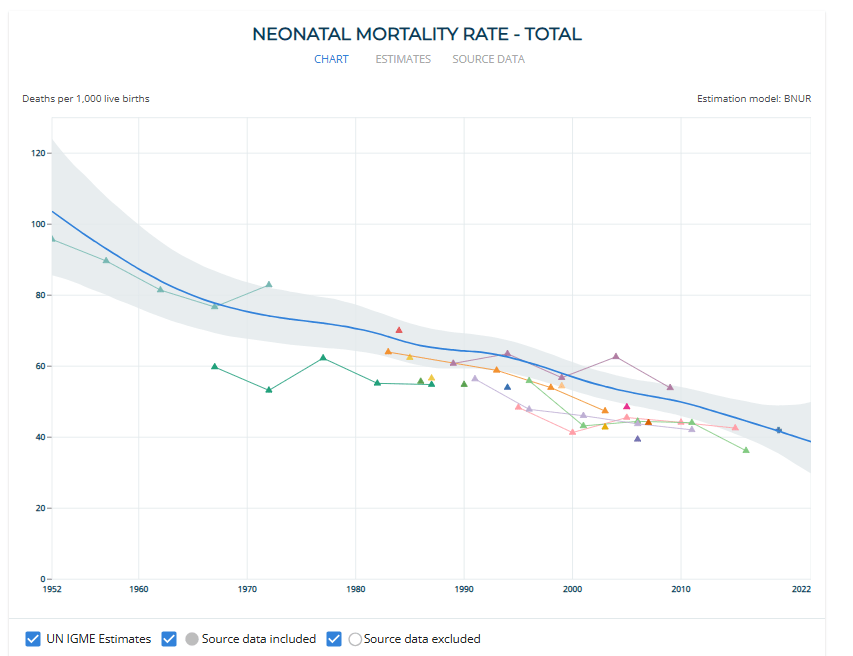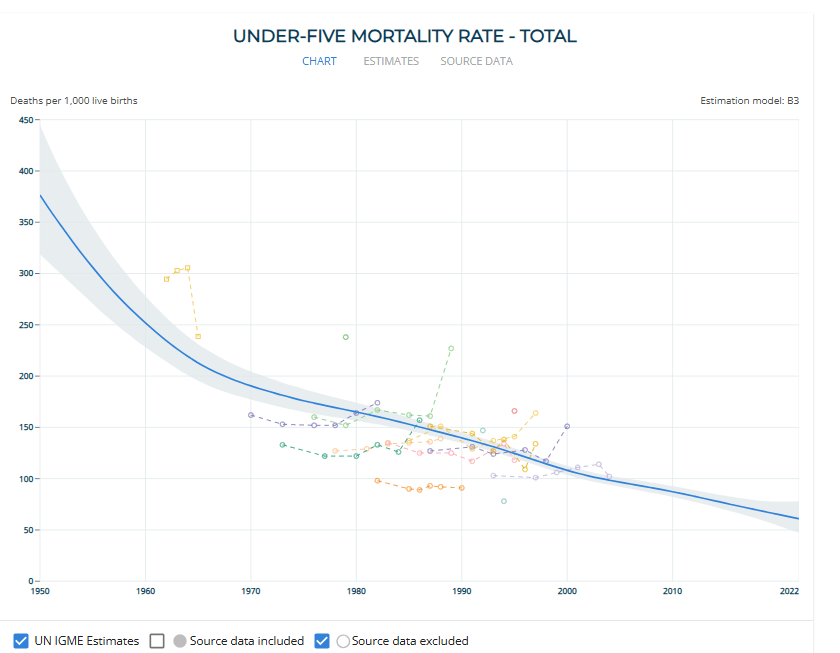Health



Pakistan is committed to achieving SDG Goal 2 (Zero Hunger) and Goal 3 (Good Health and Well-being). These goals aim to eliminate hunger, reduce child mortality, and address malnutrition by 2030.

As a signatory to the UNCRC, Pakistan must ensure children’s right to health, survival, and development.
The concept of the right to health is grounded in the belief that everyone should have access to the highest attainable standard of physical and mental health. The provision of health is an inalienable human right, globally recognized as a fundamental right. When it comes to children, the right to health is particularly important because they are vulnerable and dependent on adults for their well-being.
Pakistan has one of the youngest populations globally, with children under the age of 15 constituting a significant portion. However, the health and well-being of children in Pakistan face numerous challenges, including malnutrition, inadequate healthcare access, and high infant and child mortality rates. Ensuring the right to health for every child is not only a moral imperative but also a critical step toward sustainable development

Children’s access to essential healthcare services is critical for their well-being. This includes preventive care such as vaccinations, regular health check-ups, and treatment for illnesses and injuries. Maternal and child health services are particularly important for ensuring safe pregnancies and healthy childbirths. Access to healthcare also encompasses affordability and proximity to healthcare facilities, especially in rural areas where healthcare infrastructure may be lacking.
Children must be protected from harmful practices that could endanger their health. This includes safeguarding them from exploitation, abuse, child labor, child marriage, and other forms of harmful treatment.
|
Statistics on child mortality rates, infant mortality rates, and under-5 mortality rate are declining but still are one of the highest in the world. Several low- and lower-middle-income countries have outpaced Pakistan in this regard. Millions of children continue to die before seeing their fifth birthday – a loss that serves as a crucial reminder that threats to newborn and child health and survival persist, particularly among the most marginalized children.
In Pakistan the infant mortality rate is estimated at 75 deaths per thousand live births, while the probability of dying under age 5 (U5MR) is 93 deaths per thousand live births. Probability of dying during childhood among males is higher than females.


- The current infant mortality rate for Pakistan in 2025 is 53.536 deaths per 1000 live births, a 2.05% decline from 2024.
- The infant mortality rate for Pakistan in 2024 was 54.657 deaths per 1000 live births, a 2.01% decline from 2023.
- The infant mortality rate for Pakistan in 2023 was 55.777 deaths per 1000 live births, a 1.95% decline from 2022.
- The infant mortality rate for Pakistan in 2022 was 56.888 deaths per 1000 live births, a 1.91% decline from 2021.
Common childhood diseases (e.g., diarrhea, pneumonia, measles)
Polio is a highly contagious viral disease that primarily affects children under the age of five. It can cause paralysis, muscle weakness, and even death. In severe cases, polio can lead to lifelong disabilities, including difficulty walking, breathing, and swallowing. While there is no cure for polio, vaccination is a highly effective preventive measure.
Poliovirus was once on the brink of eradication in Pakistan. However, due to various factors, including security challenges, vaccine hesitancy, and complex socio-political landscapes, the disease has resurfaced in recent years.
Malaria is the fifth leading cause of mortality worldwide, killing hundreds of thousands of people, especially children under five and pregnant women. According to the WHO, Pakistan has 1.5 million malaria cases each year. Pakistan has been placed in the Eastern Mediterranean Region’s Group 3 countries, accounting for 95% of the overall regional malaria burden. Pakistan reduced case incidence by 40% or more in 2020 compared with 2015, according to the WHO 2021 report. However, Pakistan remained one of the top four countries responsible for the most anticipated malaria cases in the region (56%) in 2020.
Lack of access to healthcare, water resources and poor sanitation on child health
Poor maternal health during pregnancy has profound implications for child health outcomes in Pakistan. Maternal malnutrition, characterized by inadequate intake of essential nutrients during pregnancy, deprives the developing fetus of vital nutrients crucial for optimal growth and development. This nutritional deficiency can lead to intrauterine growth restriction (IUGR), resulting in low birth weight and stunted fetal growth. Additionally, poor maternal health, including untreated infections, chronic diseases, and mental health issues, negatively impact the developing fetus and increase the risk of complications during childbirth. Inadequate prenatal care, prevalent in many parts of the country, further exacerbates these challenges, as pregnant women may not receive essential medical interventions, such as prenatal vitamins, screenings, and vaccinations, to safeguard their health and that of their unborn child.
Limited access to clean water, adequate sanitation, and hygiene facilities, collectively referred to as Water, Sanitation, and Hygiene (WASH) services, poses a significant public health challenge in Pakistan, contributing to a myriad of health problems. The scarcity of clean water sources forces many communities to rely on contaminated water, increasing the risk of waterborne diseases such as cholera, typhoid fever, and diarrhea. Inadequate sanitation facilities, including lack of proper toilets and sewage systems, lead to open defecation practices, contaminating the environment and water sources with fecal pathogens. This contamination not only spreads infectious diseases but also contributes to soil and water pollution, further compromising public health.
Vaccine-preventable disease deaths remain a significant contributor to child mortality, accounting for nearly half of all deaths in children under five in Pakistan. Measles, in particular, is a deadly threat to malnourished children, who are at heightened risk of severe complications. Pneumonia, encephalitis, and croup (laryngotracheobronchitis) are the leading causes of measles-related mortality in children.
Laws
The Constitution of Pakistan presently does not acknowledge health as a fundamental right. Rather, health is solely addressed within Article 38 (Principles of Policy) of the Constitution, rendering it non-binding unlike fundamental rights. It means that the issue cannot be legally enforced.
Other National and Provisional laws Include:
- The West Pakistan Maternity Benefit Ordinance 1958
- Punjab Maternity Benefit Ordinance 1958
- The Protection of Breastfeeding and Child Nutrition Ordinance 2002
- Punjab Healthcare Commission Act 2010
- Punjab Reproductive, Maternal, Neonatal and Child Health Authority Act 2014
- Khyber Pakhtunkhwa Maternity Benefits Act 2013
- Khyber Pakhtunkhwa Protection of Breastfeeding and Child Nutrition Act 2015
- Khyber Pakhtunkhwa Healthcare Commission Act 2015
- Sindh Protection and Promotion of Breastfeeding and Child Nutrition Act 2013
- Sindh Healthcare Commission Act 2013
- Sindh Maternity Benefits Act 2018
- Balochistan Protection and Promotion of Breastfeeding and Child Nutrition Act 2014
- Balochistan Healthcare Commission Act 2014
- Gilgit-Baltistan Child Protection Response Act 2017 (GB-CPRA)

